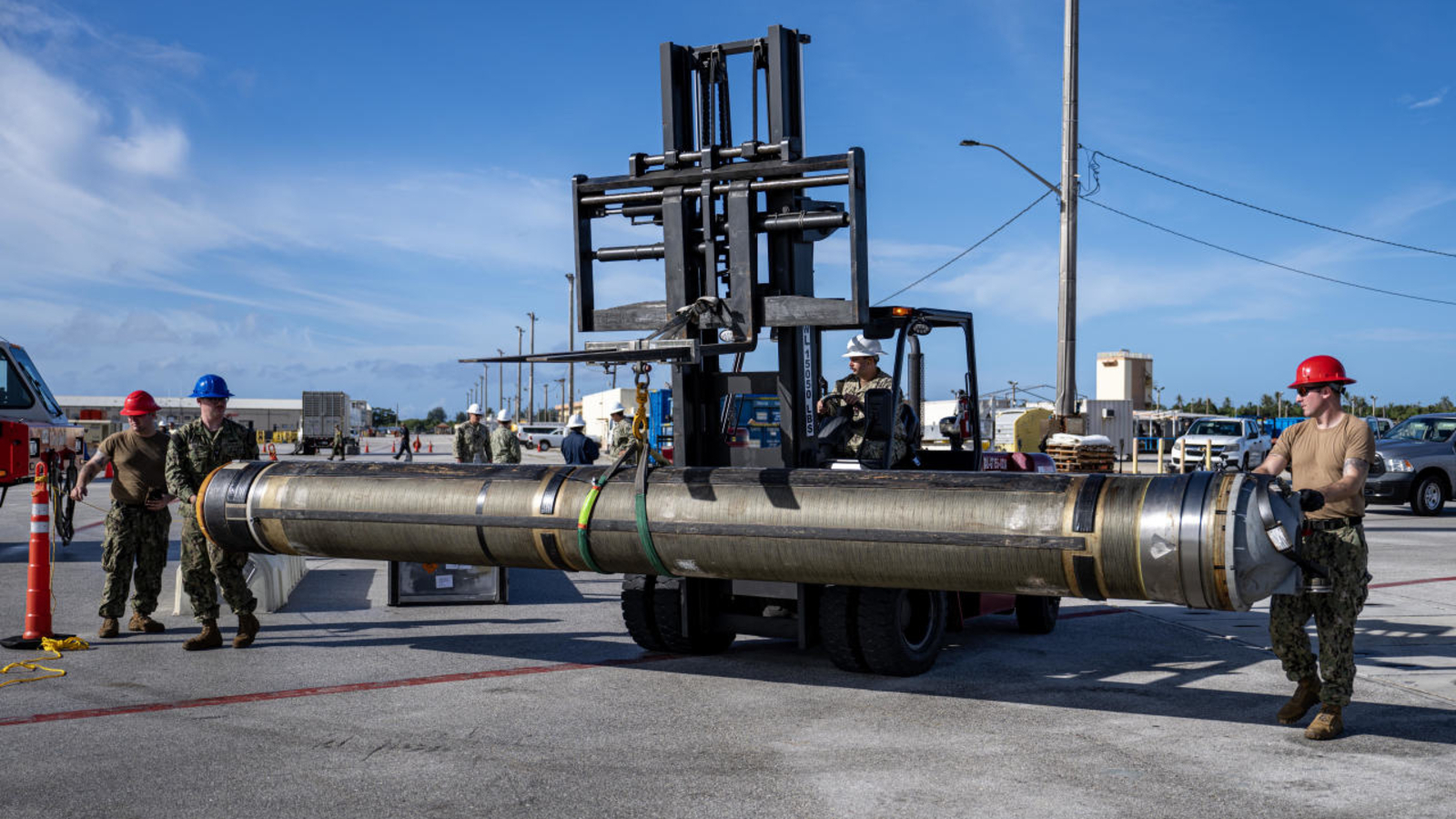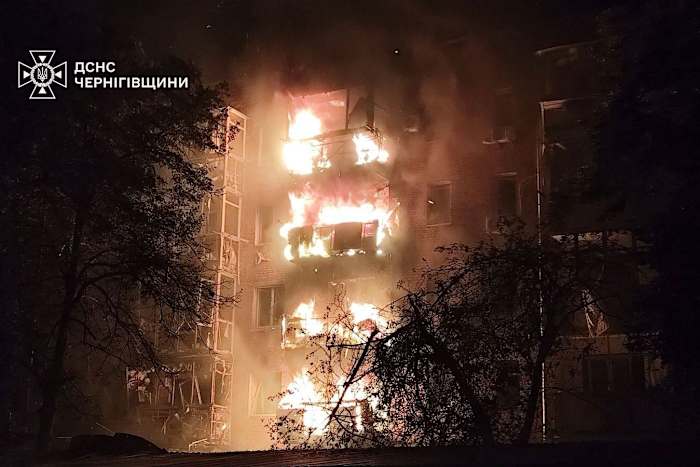WASHINGTON—The Tomahawk cruise missile that President Trump is considering for Ukraine has been the weapon of choice for decades for U.S. presidents seeking decisive military solutions.
A highly accurate missile with a powerful warhead that can fly more than 1,000 miles, the Tomahawk can reach targets inside Russia far beyond any of the weapons the U.S. has provided to Kyiv until now.
The Pentagon is ready to move forward on short notice if Trump gives the word. But he is still weighing whether providing the missiles to Ukraine would drive Russian President Vladimir Putin to the negotiating table and bring a speedy end to the war.
Ukrainian President Volodymyr Zelensky, who is scheduled to meet Trump at the White House on Friday, is seeking Tomahawks along with other weapons, arguing that additional firepower will help force Putin into talks.
“They want to go on the offensive,” Trump said, referring to Ukraine, in remarks to reporters Wednesday at the White House. “I’ll make a determination on that.”
Ukrainian Prime Minister Yulia Svyrydenko and Andriy Yermak, Zelensky’s closest adviser, traveled to Washington to meet with administration officials ahead of the Friday meeting. Ukrainian officials also met with representatives of major U.S. defense-industry companies involved in production of Tomahawk missiles and other weapons, including RTX and Lockheed Martin.
Cruise missiles alone are unlikely to shift the course of the war unless the White House is prepared to provide them in large numbers and allow Ukraine latitude to strike a range of targets deep inside Russia, analysts said.
Even then Tomahawks, which fly at subsonic speeds at a low altitude, could be vulnerable to Russian air defenses.
The Pentagon would also have to supply Ukrainians with ground launchers that can fire the missiles. Tomahawks are usually fired from warships and submarines at sea. While the Pentagon and defense contractors are developing a variety of ground-based launchers, the systems are in short supply.
A bigger issue for the White House is assessing how Moscow would respond to such an escalation in U.S. support for Kyiv. Kremlin officials have warned against providing the weapons, vowing that they would take unspecified steps in response.
But the Ukrainian dependence on the U.S. for training on the system and targeting intelligence would ensure Washington has control over how the missiles could be used, which could lessen the risk that Kyiv would use them against sensitive Russian targets that might prompt Moscow to escalate its attacks in Ukraine or beyond.
“There is a lot involved in firing a long-range system, and the Ukrainians would need a lot of help for targeting, mission planning, just operating the weapon,” said Tom Karako, director of the Missile Defense Project at the Center for Strategic and International Studies. “The corollary benefit to the United States is control, inasmuch as the U.S. might not want the Ukrainians putting this through the window of the Kremlin.”
The U.S. fired numerous Tomahawks from sea at an Iranian nuclear facility in June, and the weapons have been used regularly by other presidents, including by Bill Clinton, who fired a salvo of them in 1993 attacks in Saddam Hussein’s Iraq.
Though the Biden administration provided Ukraine with the Army Tactical Missile Systems, known as Atacms, it never seriously considered providing Tomahawks, largely because of its concern it could prompt a confrontation with Moscow that could escalate the war.
Atacms missiles have a range of about 190 miles, far shorter than Tomahawks.
The Kremlin has warned that sending Tomahawks would be a significant escalation. “If Tomahawks are transferred to Ukraine, it will lead to serious consequences,” Dmitry Peskov, spokesman for the Kremlin, warned Sunday.
Trump has mused repeatedly about providing the weapons, at times suggesting that he would only do so after talking with Putin. Trump’s frustration has grown as Putin has rebuffed the White House’s proposals that he meet with Zelensky and as Russian drone and missile attacks on Ukraine have escalated. On Wednesday, Defense Secretary Pete Hegseth sought to reinforce Trump’s message during a meeting in Brussels with North Atlantic Treaty Organization defense ministers.
“If there is no path to peace in the short term, then the United States, along with our allies, will take steps necessary to impose costs on Russia for its continued aggression,” Hegseth said.
Defense Secretary Pete Hegseth at NATO headquarters in Brussels.
Officials say that the U.S. only has a small number of Typhon ground-based launchers, which can be used to fire Tomahawks and are in high demand as part of the American effort to counter Chinese military power in the Indo-Pacific.
Other ground-based launchers could be adapted to fire the Tomahawks, including a new launch vehicle made by Oshkosh Defense. Tomahawks can also be ground-launched from an Mk-41 launcher, which is normally found on Navy ships but has been modified for onshore use.
Delivery and training could take a few months, if Trump gives the go-ahead, U.S. officials said.
Proponents of sending the Tomahawk say it would expand Ukraine’s ability to strike important Russian targets well behind the front lines, including fuel depots, air bases, tank factories and even Russia’s drone plant that manufactures deadly Iranian-designed Shahed drones.
Sending the Tomahawk, advocates say, could encourage other Western nations to provide more in the way of long-range systems.
The British have provided Kyiv with the Storm Shadow, an air-launched cruise missile. The French have provided the Scalp, which is their variant. Berlin has been so far unwilling to offer Ukraine the Swedish-German Taurus cruise missile, which has a range of 300 miles.
Ukraine has developed its own cruise missiles, including one called the Flamingo, and have used some against targets in Russia. But Zelensky has said that production of the Flamingo won’t be ramped up until December or January.
Ukraine has also used homegrown long-range drones to strike Russia’s energy infrastructure. But drones move slowly, can be shot down more easily and carry small explosive payloads.
The U.S. has been quietly providing intelligence for months to help Ukraine target Russia’s energy facilities, U.S. officials said, confirming a recent report in the Financial Times. The Wall Street Journal reported in September that Trump has signed off on U.S. intelligence sharing for such long-range strikes.
Zelensky has other weapons priorities he is also expected to pursue in Washington, including securing more antimissile interceptors for U.S.-supplied Patriot batteries.
Write to Michael R. Gordon at michael.gordon@wsj.com, Robbie Gramer at robbie.gramer@wsj.com and Alistair MacDonald at Alistair.Macdonald@wsj.com



